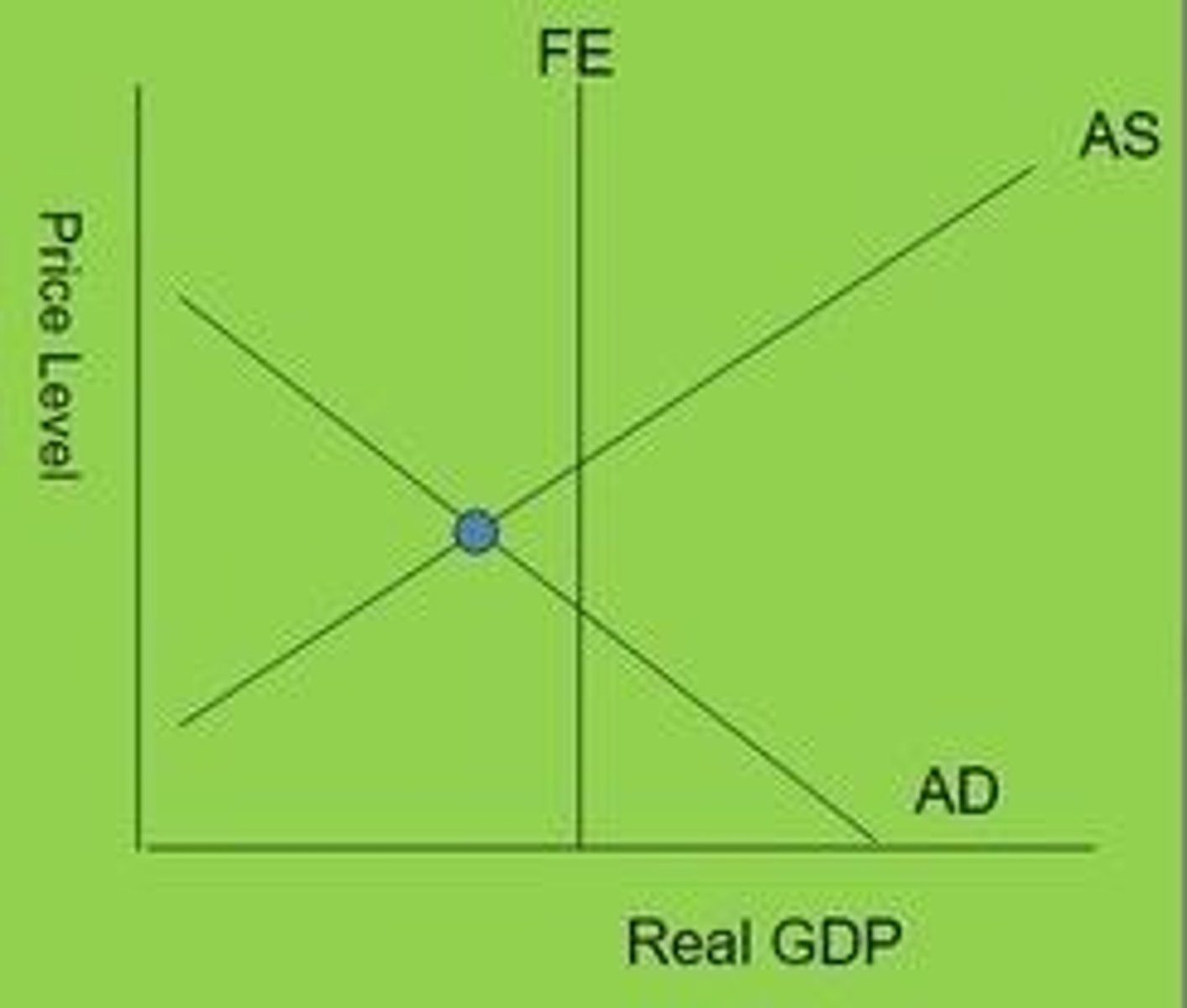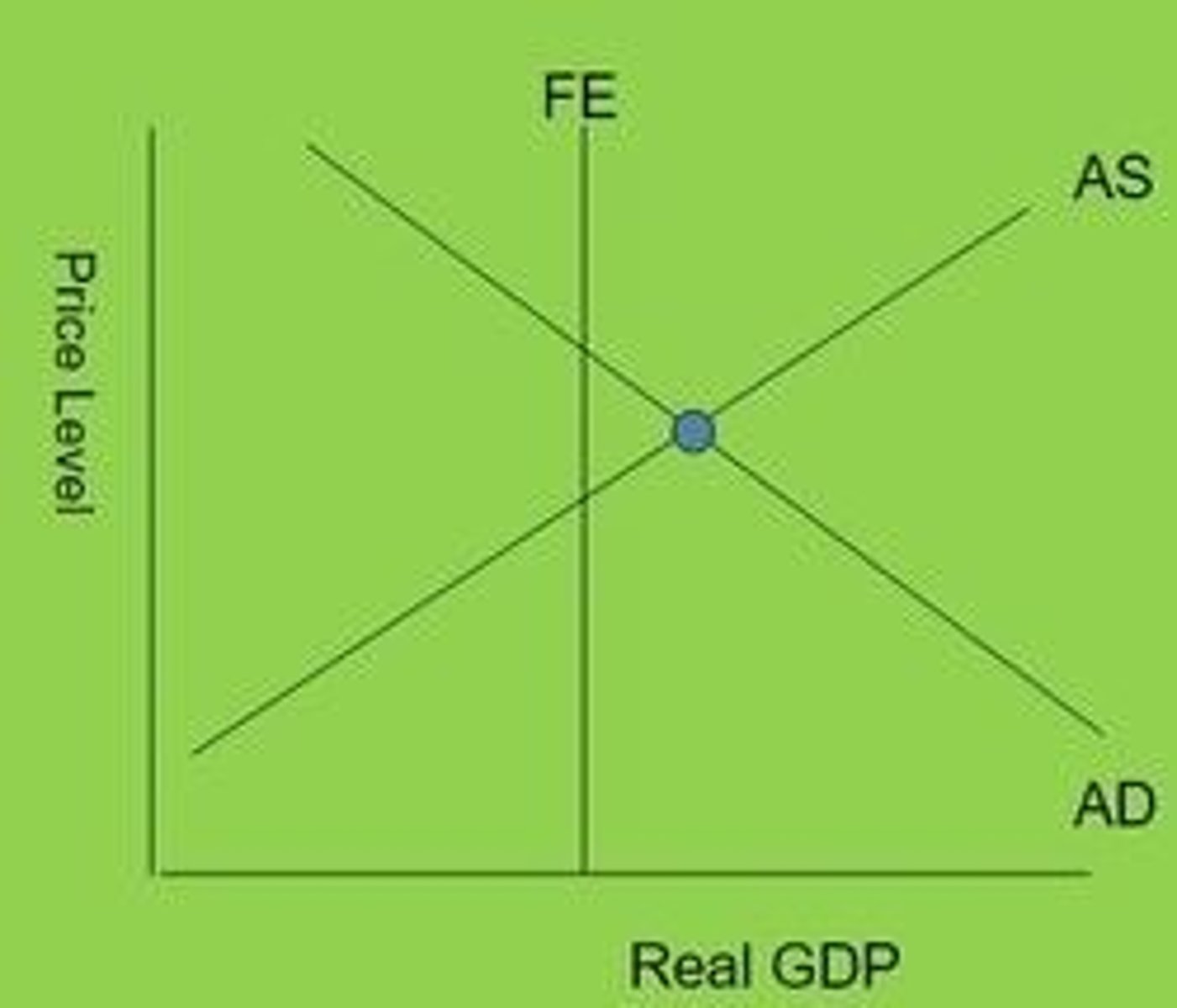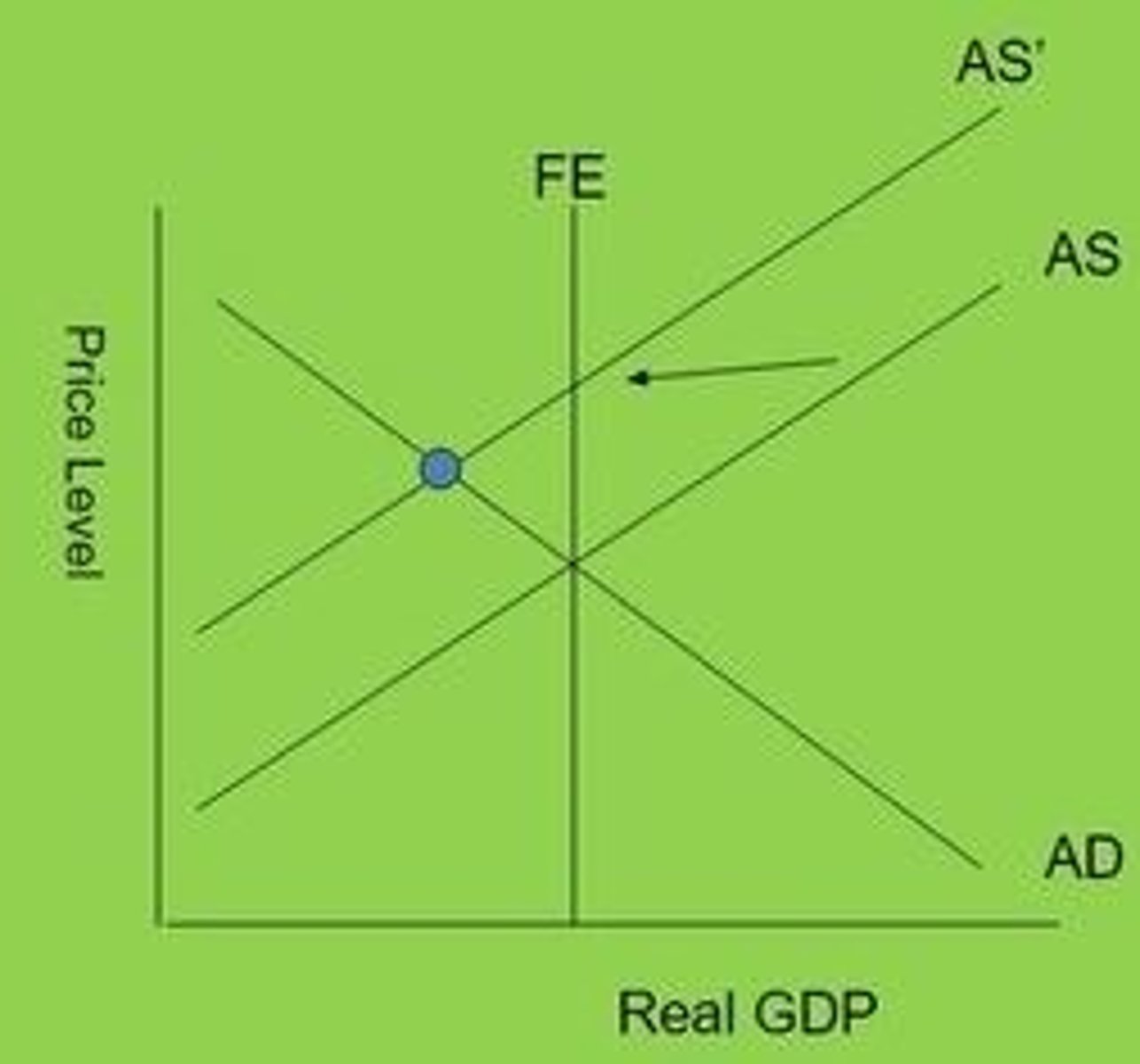Economics: Unit 6 Learning Target 1 - "The AD/AS Model & Economic Situations" Vocabulary
1/9
There's no tags or description
Looks like no tags are added yet.
Name | Mastery | Learn | Test | Matching | Spaced |
|---|
No study sessions yet.
10 Terms
Aggregate Demand (AD)
The total demand for goods and services within an economy in a specific time period.
Aggregate Supply (AS)
The total supply of goods and services produced within an economy in a specific time period.
Price Level
Average price of all goods and services within an economy. Changes in this will tell us how the rate of inflation will change.
Real GDP (Real Output)
The amount of goods and services produced and demanded, adjusted for inflation. Changes in this will tells us how the Real GDP Growth Rate AND The Unemployment Rate will change.
Short-Run Equilibrium
Reflects the current price level and real output of an economy. Where AD & AS meet on the AD/AS model. Also called the Current Economic Situation.
Full Efficiency
When the economy is operating as efficiently as possible.

Recessionary Gap
The situation where an economy is operating at below its fully efficient (FE) equilibrium. We are asking too little of the economy.

Inflationary Gap
The situation where an economy is operating at above its fully efficient (FE) equilibrium. We are asking too much of the economy.

Stagflation
A combination of inflation and reduced output resulting from a negative supply shock (shift left in AS)

Unemployment
The number of people in the labor force who do not have a job and are actively searching for one. This has an inverse relationship with Real GDP (Real Output).